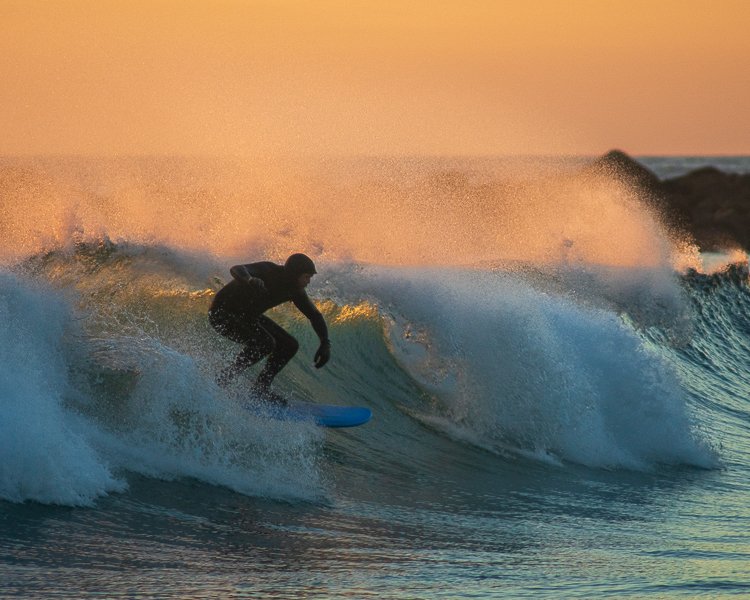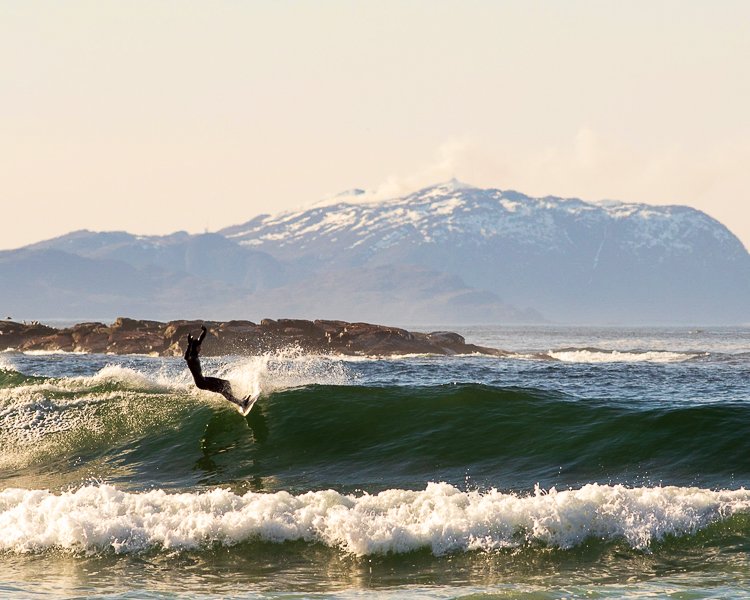Catching the Wave: A Guide to Photographing Surfing
There's something undeniably captivating about the sport of surfing. The power of the waves, the grace of the surfers, and the beautiful ocean scenery all combine to create a unique and dynamic subject for photography. However, capturing the action and beauty of surfing can be a challenge, especially when dealing with fast-moving water and unpredictable weather. In this guide, we'll explore the technical and creative aspects of photographing surfing, so you can master the art of capturing the thrill of the wave.
First and foremost, it's important to have the right gear for the job. A camera with a fast shutter speed and a high frame rate is essential for capturing the fast-moving action of surfing. A high shutter speed will freeze the motion of the surfer and the wave. A rule of thumb for photographing hand held with a telephoto lens is to equal the shutter speed to the focal length you are using, if you shoot with a 300mm lens the shutter speed should at least be 1/300 sec to avoid blur and get a sharp photo. A high frame rate (such as 8 or 12 fps) will also help you capture multiple frames in quick succession, increasing your chances of getting the perfect shot. A weather-sealed camera is also beneficial for shooting near the ocean.
Try to capture the surfer at the right time at the most dynamic moment. Photo: Are Ole Ramstad
When it comes to lenses, a zoom lens is ideal for surfing photography because it allows you to zoom in and isolate specific elements of the scene, such as a surfer doing a manoeuvre or a wave breaking. A wide-angle lens can also be useful for capturing the overall scene, including the surfer in the context of the ocean and the beach.
Composition is also key when photographing surfing. Pay attention to the background and foreground, and try to find a composition that makes the surfer stand out. Look for natural lines and shapes that can lead the viewer's eye through the image, such as the edge of a wave or the contours of the beach. Also, when capturing a surfer doing a manoeuvre like bashing the top of the wave or doing a arial, be sure to include some of the surrounding landscape to give a sense of the height and distance they are traveling
Try to time the photo to when the surfer is doing a manouver at the top of a wave. Photo: Are Ole Ramstad
Anticipation is also crucial when capturing the perfect shot. Watch for signs of when a surfer is about to take off on a wave or going for a hefty manoeuvre, and be ready to press the shutter button at the right moment. This can take practice, but with patience and persistence, you'll be able to capture the perfect shot
Lighting is another important factor when photographing surfing. . Try to shoot during the "golden hour," the period of time just before sunset or just after sunrise, when the light is soft and warm, (just remember that you need light to maintain a high shutter speed, so you might have to compensate with a lower f.stopp number or higher Iso as the sun sets). However this can make for some truly stunning shots, with the surfer's silhouette or the surrounding landscape bathed in golden light.
Photo: Are Ole Ramstad
Additionally, always be aware of the safety of yourself, the surfers and your equipment. Check the weather and tide forecast, and make sure to be in a safe distance from the surfers and the waves. One of the best resources for checking swell and tides is https://www.surfline.com/
A good idea is also to talk to the surfers before the session and ask for their permission and also for tips on the best angles and spots to capture the action.
Paning is a technique that can create uniqe photos. if you want to learn how to make photos like this, chek out the link below. Photo: Are Ole Ramstad
photographing surfing can be challenging, but with the right gear, composition, and timing, you can capture the thrill and beauty of the sport. By understanding the technical and creative aspects of shooting action in the ocean, you'll be able to create beautiful, dynamic images that truly capture the spirit of surfing.
-
Hello there! I'm Are Ole, a 41-year-old photographer based in Norway with a love for the great outdoors and adventure. Photography has been a passion of mine since 2007, when I first bought my digital DSLR camera. It was love at first click and I've been on a journey of learning ever since. While I've had my share of challenges and mistakes, I've also gained valuable experience and knowledge that I'm eager to share with others.
As a photography enthusiast, I believe in the power of community to help us learn, create, and explore better. I've been reading about photography for 16 years and have had the opportunity to sell some of my prints and even be published in a local area book.
Every Sunday, I publish a new photography tutorial and blog post where I offer tips and tricks to help beginners improve their landscape photography and post-processing skills. I'm not a professional photographer, but I have a deep love and understanding of the craft. So, let's learn and grow together in this wonderful world of photography!






